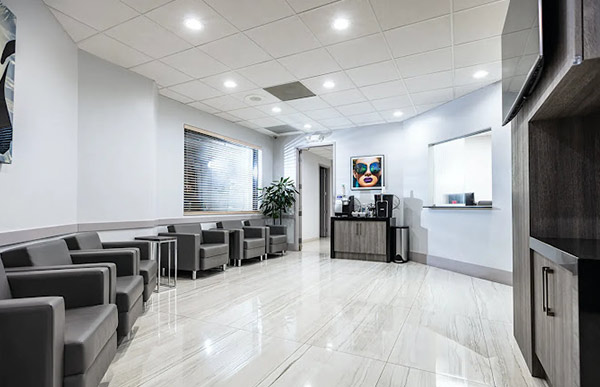Jump to this Section

What is Revision Gynecomastia?
In some cases, an unsatisfactory result from prior gynecomastia surgery must be corrected through revision surgery. Gynecomastia surgery in Boca Raton is a complex procedure that requires great surgical skills. When performed by an inexperienced doctor, the outcome of the surgery may be less than ideal.
Even when working with an experienced doctor, problems may arise during surgery or during the recovery process, especially if patients do not follow their surgeon’s post-operative instructions. In some cases, negative results may occur from miscommunication between the patient and doctor. In such cases, revision surgery may be able to correct or improve the results of the original gynecomastia surgery.
Techniques for Revision Gynecomastia Surgery
Dr. Jacobs will choose from a variety of surgical techniques to correct any remaining gynecomastia and improve the appearance of your chest area. In cases where the breast tissue was not sufficiently reduced during the first surgery, he may remove the excess tissue through surgical excision or liposuction of the chest area.
As with primary surgery, incisions are typically concealed in the lower half of the nipple area. If complaints include uneven skin texture or irregular deposits of fat, Dr. Jacobs will work to address these during the surgery as well.


Correcting Crater Deformities


Alternatively, when prior surgery has been mostly directed towards excision of the excess gland beneath the nipples, the most common problem is a “crater” deformity, in which the tissues tend to indent like a saucer. This can be apparent when the hands are down at the sides or sometimes only when the hands are elevated above the head or out to the side. Careful evaluation can then be made to ascertain if there is sufficient surrounding tissue to perform surgery utilizing fat flaps from these adjacent areas. In Dr. Jacobs’ experience, fat flaps are the preferred method of revision treatment for this problem. However, they are limited by the availability of adequate surrounding tissue and the presence of scar tissue, which will limit movement and mobility and hence the effectiveness of any planned fat flaps.
First, Dr. Jacobs carefully separates the skin of the chest from the underlying fatty tissue. Then additional dissection separates the fat from the muscle underneath. The “tongues of fat” or fat flaps thus created will derive their blood supply from the peripheral areas. The flaps are then moved towards the area of deficient tissue and sutured to each other or even sutured over each other in an overlapping technique to build up greater thickness. The limiting factor in doing this gynecomastia revision is the availability of adequate fatty tissue and also the mobility of that tissue.
On occasion, there is insufficient available tissue with which to create fat flaps. In these circumstances, fat grafting can be useful. This technique consists of removing fat from another part of the body (commonly the abdomen or love handles), cleansing and processing the fat, and then very carefully injecting it into the areas in which there is a deficiency of fat. There are technical considerations beyond the scope of this explanation, but it must be emphasized that there are limitations as to how much fat can be injected at one time into one location. Also, not all the injected fat will survive. Hence, multiple sessions of fat grafting may be required to achieve an optimal result.
How Does Gynecomastia Reduction Revision Surgery Address Irregular Contours?
Oftentimes, men have had gynecomastia surgery utilizing some form of liposuction only. This can leave irregular areas of residual tissue (felt as thickened areas) as well as areas of over-removal (felt as very thin areas). Sometimes so much tissue has been removed that the skin is “stuck” to the underlying muscle, which can create laxity, dimpling, or cratering upon movement of the arms.
Gynecomastia revision surgery in Boca Raton is often directed to removing the residual excess tissues in order to achieve a smoother contour with a uniform pinch of skin and fat. This is usually accomplished with very precise additional liposuction. Laser liposuction touted to be the “latest and greatest” actually results in severe scar tissue and lateral depression formation and it has yet to be proven to aid in skin tightening. Further, it has no effect on gland tissue.
When too much tissue has been removed, then it must be replaced. This can be done with the use of fat grafting or fat flaps. When dimpling occurs, the skin must be detached from the underlying muscle, and then some type of fat tissue placed in-between (as a “spacer”) so that the skin does not reattach at the same place. This entire process of dealing with areas of irregularity may be thought of as hills and valleys. Revision surgery is basically aimed at reducing the hills and filling in the valleys in an attempt to obtain a smooth and level plane.


Revision Gynecomastia Before and After Gallery
View our photo gallery full of patient before & after photos.
Ideal Candidates for Gynecomastia Surgery
There is no right or wrong age for male breast reduction to be performed.

Teenagers who are embarrassed or concerned about this condition

Older men who are also suffering and may be able to combine treatments to maximize results

Patients affected by gynecomastia that has remained stable

Individuals who work with the support of Dr. Jacobs to follow a care plan
What to Expect from Recovery
Most patients are able to return home the same day as their gynecomastia revision surgery in Boca Raton. Pain levels will vary between individuals, with pain usually lasting between three days and two weeks. Most patients also experience some amount of swelling and bruising, which can be minimized by wearing a compression bandage provided by Dr. Jacobs.
Most men are able to return to work within one week, but this timeframe will vary based upon the revisions being made and the individual’s work duties (strenuous work must be avoided for longer). Patients must refrain from lifting, pulling, or pushing motions for six weeks following their surgery.
Dr. Jacobs provides his patients with a specific set of instructions to follow during the recovery period. Careful adherence to these instructions will help ensure a positive outcome after the surgery.


Benefits of Gynecomastia Revision Surgery
Gynecomastia revision surgery is great for boys and men looking for:
- Removal of excess gynecomastia tissue
- An attractive and flat chest
- Minimal scarring
- One day surgery
Risks of Revision Male Breast Reduction Surgery
Even though all surgical procedures are complex, revision surgery is inherently more complicated since the area being treated has been already operated on. Therefore, it’s important to be aware of potential complications and risks beforehand. By visiting a board-certified plastic surgeon for revision gynecomastia surgery, you can reduce the risk of scarring, scar tissue, asymmetry, and irregularities.


Why Choose Dr. Jacobs for Breast Reduction Surgery?
If you are looking for a permanent solution for your gynecomastia, please schedule a private and free consultation with Dr. Jacobs or call our South Florida office to talk to one of our representatives.
Contact UsContact Us
Reach out to Dr. Jacobs today to schedule your consultation!
Frequently Asked Questions

How much does revision gynecomastia surgery cost?
Dr. Jacobs considers different factors, such as post-operative recovery expenses, anesthesia, surgical fee, lab tests, and the extent of surgery. This helps establish the cost of revision gynecomastia surgery in Boca Raton.
How long does revision gynecomastia surgery take?
The surgery takes from 60 to 90 minutes.
What type of anesthesia is used?
Revision surgery is typically performed under general anesthesia or with a combination of conscious sedation and local anesthesia. Dr. Jacobs works with highly-trained anesthesiologists who ensure patients are comfortable and safe during gynecomastia revision surgery in his Boca Raton office. This allows patients to complete their same-day surgery without grogginess and nausea.
Why is choosing a board-certified revision gynecomastia surgeon critical?
If you are considering gynecomastia surgery or require revision surgery, it is important to understand that the results of the surgery are dependent upon many factors. Perhaps most importantly, the surgery should be performed by a skilled and experienced surgeon who specializes in gynecomastia surgery.
Additionally, it is vital that you strictly follow your surgeon’s post-operative instructions. In some cases, however, even with the right surgeon and perfect adherence to post-operative instructions, your body may not heal perfectly, and/or the desired results may not be achieved.
How do you address skin abnormalities?
Dr. Jacobs is occasionally presented with skin contour problems requiring revision gynecomastia surgery. These include lines or creases of the areola, lax skin, wrinkling, etc. Revision surgery for these problems will require surgical detachment of the skin and then an evaluation of the underlying problem. For example, a crease across an areola may be just a small area of insufficient support of the underlying tissues. This can be treated with either a fat graft or an operation to lift up the areola and suture the underlying defect closed so that the nipple now lies on a smooth bed. Sometimes a large amount of skin detachment will allow for uniform tightening of the skin, which will help with lax skin or wrinkling.
Sometimes the skin itself has lost its ability to self-tighten, either through a prior severe overweight condition, the natural aging process, smoking or as a consequence of prolonged sun exposure over many years. In these situations, care must be taken to preserve a certain amount of underlying fat in order to support the skin. This is where the artistry and experience of the initial surgeon must be excellent. When a small amount of skin laxity presents itself, fat grafting can be an appropriate answer. However, if there is a large amount of skin laxity present, then some type of skin tightening procedure, carefully individualized, may be required. This, of course, will require additional permanent scars in order to tighten the skin.
How do you tighten sagging skin?
Some surgeons perform a “doughnut excision” in an attempt to either decrease the diameter of an extremely wide areola, to raise the nipple position or take up some anticipated loose skin, or any combination of these problems. When this technique is performed, very careful suturing is required, frequently with a permanent circular suture under the skin to keep the diameter small. However, this suture can be felt just under the skin and may be objectionable to the patient. If a permanent suture is not used, then spreading of the areola or the scar or both may occur due to the competing tensions of the surrounding skin. In these circumstances, substantial improvement may not be possible unless the patient would accept a permanent but feelable suture under the skin.
Alternatively, some surgeons, when faced with a large pendulous breast, may opt to use an “inverted T technique” which is frequently used for female breast reductions. In these situations, virtually nothing can be done to eliminate the resultant scars except, if needed, a scar revision to improve the scars themselves.






